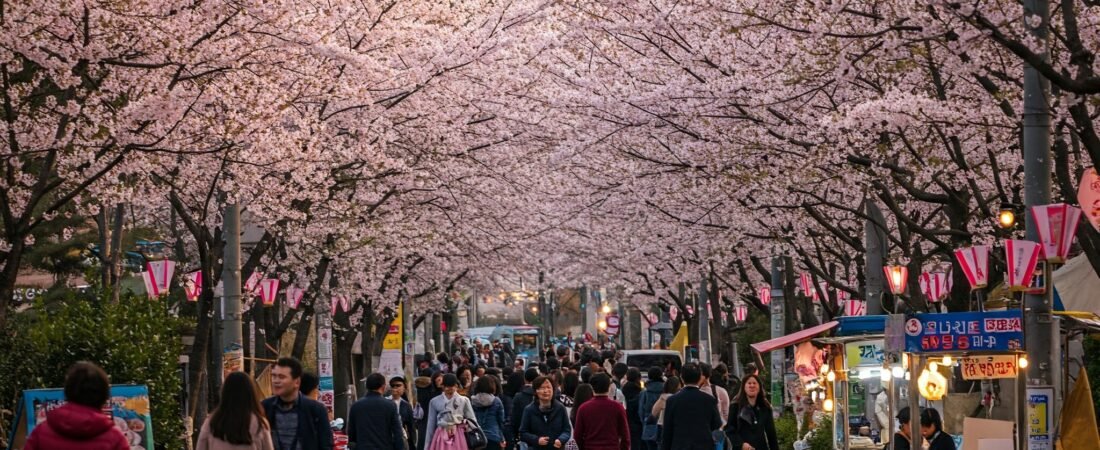Spring has a way of painting the world anew, and here in Seoul, as April unfolds, one of its most breathtaking masterpieces is coming into full bloom: the Sakura, or cherry blossom. It’s a sight that captivates millions, a fleeting spectacle of pink and white that transforms landscapes into dreamlike scenes. But Sakura are more than just beautiful decorations; they are deeply, intrinsically woven into the fabric of nature, playing a vital role in the springtime ecosystem.
The Grand Awakening
The first, most obvious integration is timing. Sakura blossoms don’t appear in isolation. Their arrival is perfectly synchronized with nature’s broader reawakening after winter. As temperatures rise and daylight hours lengthen, the trees respond, bursting forth in a vibrant display that coincides with the greening of other plants, the return of migratory birds, and the emergence of insects. They are a flamboyant announcement that the dormancy of winter is over and the vibrant energy of spring has truly begun. The bare branches, stark against winter skies, suddenly soften into delicate clouds, mirroring the softening of the weather itself.
A Feast for Early Risers
Look closely at a blooming cherry tree, and you’ll likely see more than just petals. These blossoms are an important early-season nectar source for pollinators. Bees, buzzing diligently from flower to flower, are among the first visitors, crucial for the eventual (though often infertile in ornamental varieties) fruit development and vital for their own colony’s growth after the lean winter months. Various species of birds also flit among the branches. While some might be searching for insects attracted to the blossoms, others, like the Japanese white-eye, are known to sip the nectar directly, their tiny forms adding another layer of life to the floral display. The blossoms provide sustenance, drawing wildlife into their branches and becoming active participants in the local food web.
The Dance of Transience and Renewal
Perhaps the most profound way Sakura integrates with nature is through its legendary ephemerality. The blossoms peak for maybe a week, two at most, before the petals begin to fall, often hastened by spring winds and rain. This fleeting beauty, known in Japanese culture as mono no aware (the pathos of things), mirrors the very cycles of nature itself – growth, peak, decay, and renewal.
The falling petals, often called sakurafubuki or “Sakura snow,” don’t just disappear. They blanket the ground, mingling with new grass and fallen leaves. As they decompose, they return nutrients to the soil, enriching the earth that sustains the tree and countless other organisms. This cycle of bloom and decay is nature’s rhythm personified. The tree gives its beauty to the world, interacts with other living creatures, and then returns its physical form back to the earth, contributing to the health of the ecosystem that allowed it to flourish.
More Than Just a Pretty Flower
As we enjoy the Sakura season here in Seoul, taking photos and perhaps enjoying hanami (flower viewing) picnics, it’s worth remembering this deeper connection. The cherry blossoms are not separate from nature; they are a vibrant expression of it. They signal the season’s change, provide for wildlife, and embody the beautiful, transient cycles of life and renewal that define the natural world. They are a reminder that even the most delicate beauty is part of a robust, interconnected system.
So, take a moment this spring. Observe the bees, watch the petals dance on the breeze, and appreciate the Sakura not just for their stunning appearance, but as an integral part of nature’s magnificent springtime symphony.
Happy Spring!
